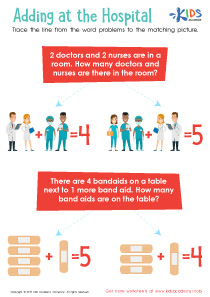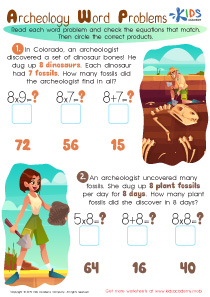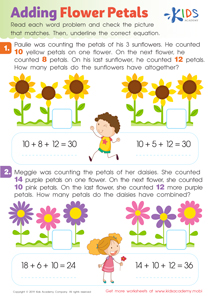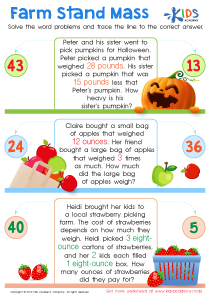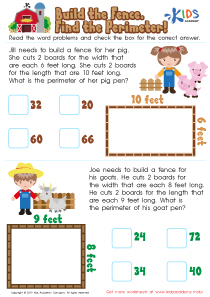Normal Graph Word Problems Worksheets for Ages 7-8
1 filtered results
-
From - To
Introduce your 7-8 year olds to the fascinating world of graph interpretation with our Normal Graph Word Problems worksheets! Designed to blend fun with learning, these educational downloadable worksheets offer engaging and age-appropriate challenges. Each worksheet is crafted to help children understand basic graph concepts through interesting word problems, helping them develop both analytical and mathematical skills. Perfect for both classroom and home use, these worksheets ensure a solid foundation in handling data and solving real-world problems. Get your set today and watch your child enjoy mastering graphs while enhancing their critical thinking abilities!
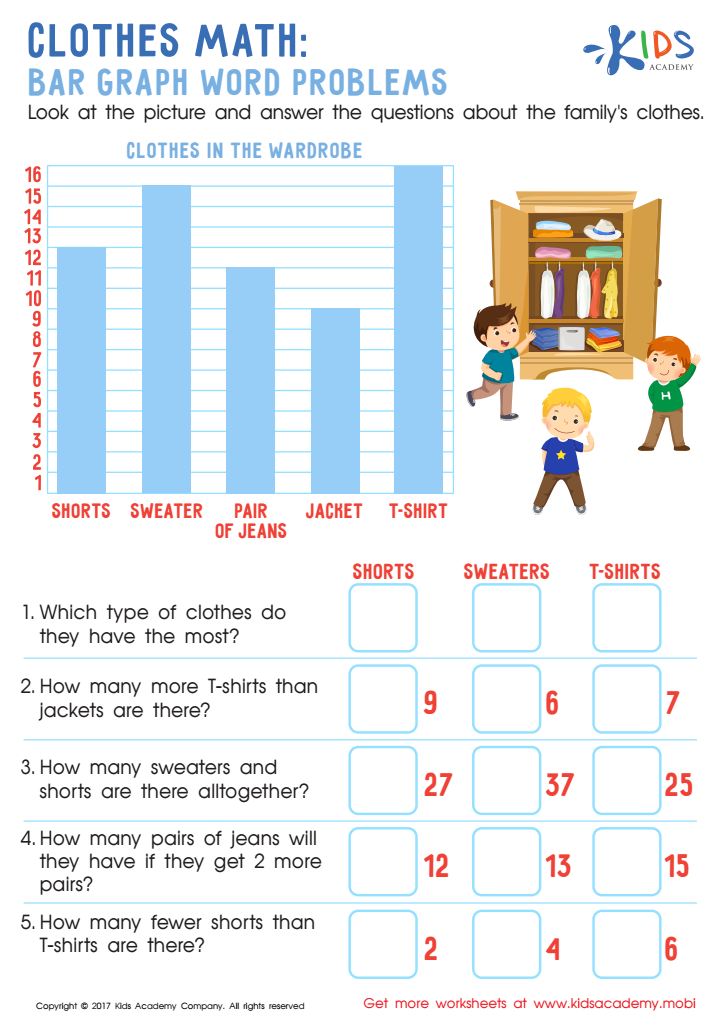

Clothes Math: Bar Graph Word Problems Worksheet
The Importance of Normal Worksheets on Graph Word Problems for Children Aged 7-8 Years
In the world of primary education, cultivating a robust foundation in basic mathematics is crucial for young learners. Among the various tools and resources available, normal worksheets on graph word problems have proven to be exceptionally beneficial. These educational homework sheets are specifically crafted to enhance the mathematical understanding and analytical skills of children aged 7-8 years, providing a structured way for them to engage with essential math concepts.
Building a Strong Mathematical Foundation
Graph word problems are an integral part of a child’s mathematical curriculum. They combine visual information with problem-solving requirements, making them a compelling educational tool. For children aged 7-8, these problems help bridge the gap between abstract numbers and real-world applications. Educational homework sheets focused on these problems support the development of critical thinking and reasoning skills, as they require students to interpret data presented in graphical format and solve related questions.
Enhancing Data Interpretation Skills
One of the significant advantages of using normal worksheets on graph word problems is the early introduction to data interpretation. In an increasingly data-driven world, the ability to understand and interpret information is invaluable. These worksheets teach children how to read simple bar graphs, picture graphs, and basic charts. By analyzing this data, children learn to draw conclusions, observe trends, and understand the basic implications of quantitative information, skills that are useful in everyday life and future academic pursuits.
Improving Problem-Solving Abilities
The structure of graph word problems encourages children to engage in problem-solving in a methodical manner. As they navigate through these educational homework sheets, they learn to identify key information, determine relevant data, and apply it to find solutions. This process not only improves their mathematical skills but also enhances their overall problem-solving capabilities. It fosters an environment where children can experiment with different approaches and learn from their mistakes in a low-stress context.
Encouraging Independent Learning
Normal worksheets are an excellent resource for promoting independent learning. Children aged 7-8 are at a developmental stage where they are beginning to learn autonomously. Educational homework sheets on graph word problems provide a perfect opportunity for them to explore concepts at their own pace. They can take the time to understand the problems, reflect on the questions, and determine the answers on their own, which boosts their confidence and encourages a more profound interest in learning.
Supporting Classroom Learning
Teachers find these worksheets invaluable for reinforcing classroom lessons. Often, concepts introduced during school hours need supplemental practice to be fully assimilated by young students. By integrating normal worksheets on graph word problems into homework assignments, teachers can ensure that students reinforce what has been taught in class in a practical, engaging manner. This consistent practice helps solidify the learning and enables students to perform better in class assessments.
Facilitating Personalized Education
Every child learns at their own pace and has unique strengths and weaknesses. Educational homework sheets allow for personalization of the learning process. Teachers and parents can identify specific areas where a child might be struggling, and provide additional worksheets to target those difficulties. Conversely, if a child shows greater interest or aptitude in a particular area, more challenging problems can be introduced to keep them engaged and intellectually stimulated. This tailored approach helps in catering to the individual learning needs of each child, making education a more effective and enjoyable experience.
Spurring Interest in Mathematics
Graph word problems on normal worksheets can make learning math more interesting and relatable by linking it to real-life situations. For instance, a problem might involve understanding the number of apples sold over a week or comparing the heights of different plants in a garden. Such contexts make the math problems more tangible and less abstract, which can significantly increase a child’s interest and engagement in learning mathematics.
Conclusion
In conclusion, normal worksheets on graph word problems are more than just educational homework sheets; they are a vital tool in the developmental arsenal for children aged 7-8 years. They help build a strong foundation in mathematics, enhance data interpretation skills, improve problem-solving abilities, encourage independent learning, support classroom instruction, facilitate personalized education, and spur a lasting interest in mathematics. Investing time in such resources can provide young learners with the skills and confidence needed to navigate not only future academic challenges but also real-world situations. Therefore, incorporating these worksheets into the educational journey of children is not just beneficial—it is essential for fostering competent, confident, and curious learners.
 Assign to the classroom
Assign to the classroom
